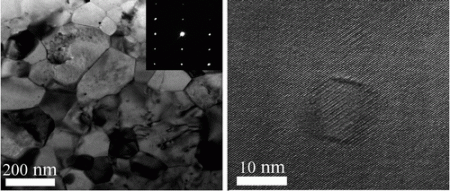Feb
21
Progress on the Thermoelectric Front
February 21, 2011 | 1 Comment
Researchers from Boston College, MIT, Clemson University and the University of Virginia have used a nanotechnology processing technology to achieve a 60 to 90 percent increase in the thermoelectric figure of merit of p-type half-Heusler, a common bulk semiconductor compound. The team’s paper has been published in the journal Nano Letters.
Half-Heusler compounds and the structurally similar Heusler materials are intermetallic compounds made from three elements that form a cubic crystal structure.
The team gained improvement in the half-Heusler material, which has been under study for its thermal stability, mechanical sturdiness, non-toxicity and low cost. But, the application of half-Heusler has been limited because of its poor thermoelectric performance: it previously registered a peak figure of merit of approximately 0.5 at 700º C for bulk ingots.
The goal for efficiency is a value of 1 or more for a performance measurement called the thermoelectric figure of merit or ZT. ZT combines the electric and thermal conductivities of a material with its capacity to generate electricity from heat. Getting to this goal has proven extremely difficult because the two parameters are generally interdependent of one another.
The team’s new process is first forming alloyed ingots using an arc melting technique, then creating nanoscale powders by ball milling the ingots and finally obtaining dense bulk by hot pressing the balls into a whole. The research team loaded the alloyed bulk ingot of a half-Heusler alloy (with a composition of Zr0.5Hf0.5CoSb0.8Sn0.2) into a jar with grinding balls and then subjected to a mechanical ball-milling process. The resulting nanopowder with particles as small as 5 to 10 nanometers were then reconstructed into bulk form by pressing them into pellets with a diameter of 12.7 mm by the direct current induced hotpress method.
Transport property measurements together with microstructure studies on the nanostructured samples, in comparison with that of the bulk ingots shows that the thermoelectric performance improves largely because of low thermal conductivity produced by enhanced phonon scattering at grain boundaries and defects in the material. The material was also found to have a high Seebeck coefficient, a measure of thermoelectric power.
The point is to not let a lot of heat pass through while converting the heat into electricity. Thermal conductivity isn’t good, the heat is getting away. If you can keep the heat in and one outside of the device cool the difference will get you more power.
The team’s dramatic increase in the figure of merit, used to measure a material’s relative thermoelectric performance, could pave the way for a new generation of products – from car exhaust systems and power plants to solar power technology – that run cleaner, according to co-author Xiao Yan, a researcher in the Department of Physics at Boston College.
Yan, working with BC Professor of Physics Zhifeng Ren and MIT’s Soderberg Professor of Power Engineering Gang Chen, have increased the figure of merit value of p-type half-Heusler another step to 0.8 at 700º C. Moreover, the groups’ material preparation methods proved to save time and expense compared with conventional methods.
Ren said, “This method is low cost and can be scaled for mass production. This represents an exciting opportunity to improve the performance of thermoelectric materials in a cost-effective manner.”
Researchers in the BC and MIT labs are still trying to prevent grain growth during the press operation, which accounts for the still large thermal conductivity of half-Heusler.
Ren explains, “Even lower thermal conductivity and improved thermoelectric performance can be expected when average grain sizes are made smaller than 100 nm.”
Thermoelectric is a technology that could catch the massive losses of heat from fuel use. Perhaps half or more of the fuel used is lost as heat, recovering it to electricity would double the amount of work from fuel or more succinctly, cut fuel use in half.
These are efforts well worth the time and investment.
Comments
1 Comment so far



[…] This post was mentioned on Twitter by Will, sun raven. sun raven said: Progress on the Thermoelectric Front | New Energy and Fuel: ZT combines the electric and thermal conductivities … http://bit.ly/eqolpg […]